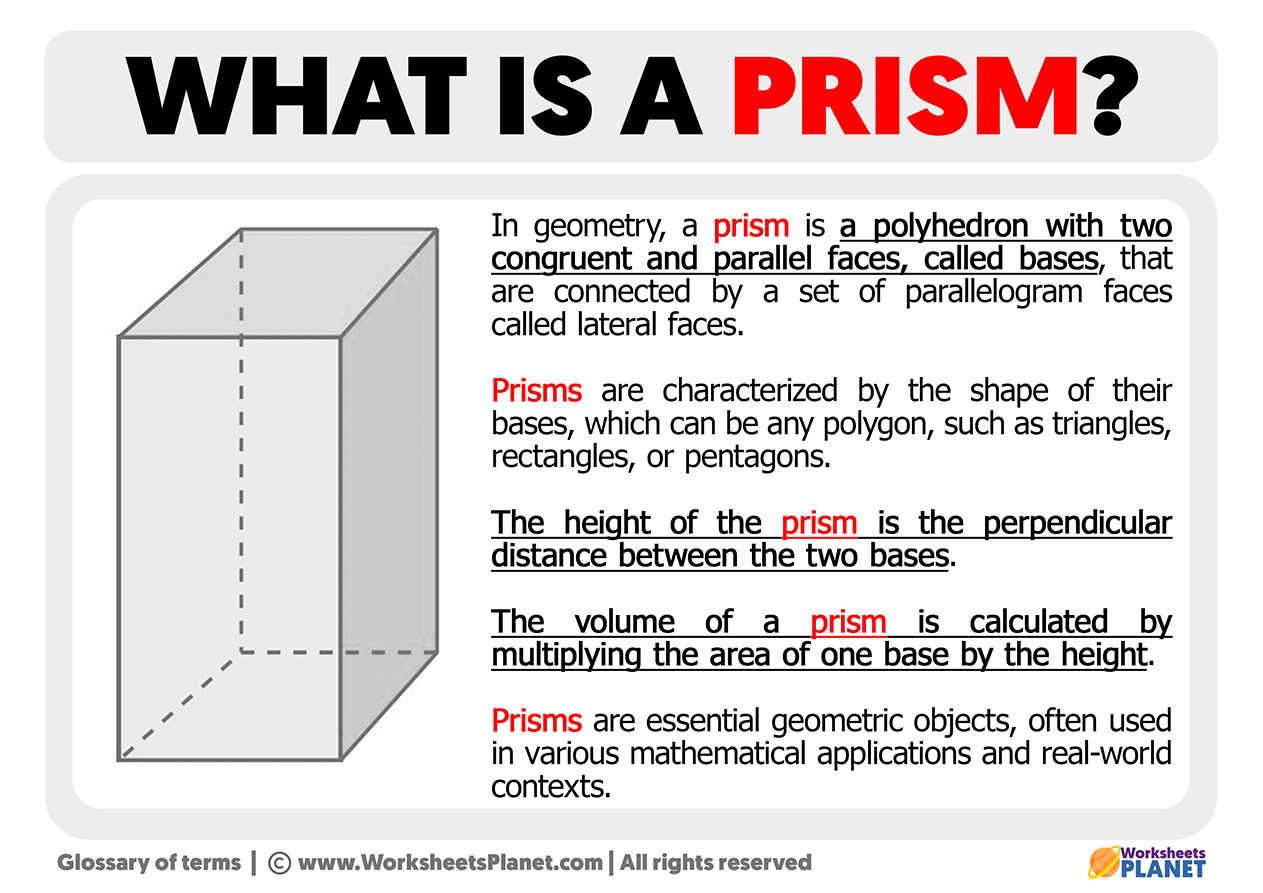In geometry, a prism is a polyhedron with two congruent and parallel faces, called bases, that are connected by a set of parallelogram faces called lateral faces. Prisms are characterized by the shape of their bases, which can be any polygon, such as triangles, rectangles, or pentagons.

The height of the prism is the perpendicular distance between the two bases. The volume of a prism is calculated by multiplying the area of one base by the height. Prisms are essential geometric objects, often used in various mathematical applications and real-world contexts.

